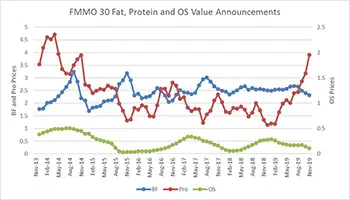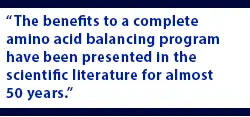
Milk protein regains the crown
 Br Dr. Eric Schwab
Br Dr. Eric SchwabIn September 2019, after a 48-month reign, the USDA announced a new milk component value champion. Yes, milk protein once again regained the crown. During its 48-month reign, fat outperformed milk protein by an average of $0.70 per pound.
 While fat’s value has remained steady and worth capturing, starting in February 2019, protein values have taken off like Usain Bolt running the 100 meter. In fact, it has increased by 232% since February, or more than 20% per month – a pretty amazing performance. The impact of this on recent milk checks has been a welcomed relief to dairy producers and the industry as a whole.
While fat’s value has remained steady and worth capturing, starting in February 2019, protein values have taken off like Usain Bolt running the 100 meter. In fact, it has increased by 232% since February, or more than 20% per month – a pretty amazing performance. The impact of this on recent milk checks has been a welcomed relief to dairy producers and the industry as a whole.
As of November 2019, an increase in milk protein content of 0.1 percentage units by a cow producing 80 pounds of milk returns $0.31 per cow per day gross.
Couple that with the same increase in milk fat content, valued at $0.19 per cow per day, and you have a chest-thumping gross return of $0.50 per cow per day. For every 100 cows, that adds up to gross returns of $1,500 per month.
Are you capturing these returns? If not, are you wondering what it takes?
 The benefits to a complete amino acid balancing program have been presented in the ruminant scientific literature for almost 50 years. In that 50 years, we have developed new techniques and models to capitalize on this science. We have also learned that the benefits go well beyond improvements in milk protein and fat content and yield. The concepts and practices reside in both the ruminal and post-ruminal space, and benefits are realized not only by mature cows, but also by the precious calf in utero.
The benefits to a complete amino acid balancing program have been presented in the ruminant scientific literature for almost 50 years. In that 50 years, we have developed new techniques and models to capitalize on this science. We have also learned that the benefits go well beyond improvements in milk protein and fat content and yield. The concepts and practices reside in both the ruminal and post-ruminal space, and benefits are realized not only by mature cows, but also by the precious calf in utero.
Using your homegrown feeds and associated feedstuffs, your nutritionist can balance the amino acids in your dairy diets to help you realize these benefits. Ask your nutritionist to share with you a recent field study conducted across the upper Midwest showing returns that almost 40 producers realized even during a period of historically low milk prices.
If you are looking to improve farm profitability, contact your Vita Plus consultant to discuss capitalizing on this technology.
About the author: Dr. Eric Schwab grew up in a rural town in New Hampshire. He attended the University of New Hampshire–Durham, where he received bachelor’s degrees in dairy management and environmental and resource economics in 1998. While working in northeast Wisconsin, he met Dr. Randy Shaver and returned to academia at the University of Wisconsin-Madison to pursue his graduate degrees. In Shaver’s lab, Schwab’s master’s degree research focused on kernel processing and chop length in BMR corn silage. His Ph.D. dissertation focused on B-vitamin nutrition and ruminal B-vitamin synthesis in lactating dairy cows. In September 2005, Schwab joined Vita Plus on the dairy nutrition and technical services team. He lives in Deerfield, Wisconsin with his wife and their three sons.
| Category: |
Business and economics Dairy Performance Feed additives Milk production and components |

